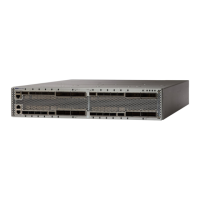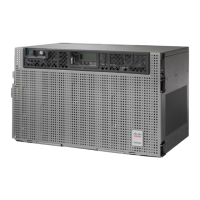A namespace selection cannot be used by itself; at least one element must be specified in the filter if
any elements are to be included in the filter output.
Example:
<filter type="subtree">
<top xmlns="http://example.com/schema/1.2/config"/>
</filter>
•
Attribute match expressions -Filtering is done by matching a specified attribute value. This filtering with
the Match attribute can be specified only in Table classes.
Example:
ifName is the attribute match expression
<filter type="subtree">
<t:top xmlns:t="http://example.com/schema/1.2/config">
<t:interfaces>
<t:interface t:ifName="eth0"/>
</t:interfaces>
</t:top>
</filter>
•
Containment Nodes - Filtering is done by specifying nodes (classes) that have child nodes (classes).
This filtering is by specifying container classes.
Example: top is a containment node
<filter type="subtree">
<top xmlns="http://example.com/schema/1.2/config">
<users/>
</top>
</filter>
•
Selection Nodes - Filtering is done by specifying leaf nodes. This filtering specifies leaf classes.
Example: users is a selection node (in the containment node - top)
<filter type="subtree">
<top xmlns="http://example.com/schema/1.2/config">
<users/>
</top>
</filter>
•
Content Match Nodes - Filtering is done by exactly matching the content of a leaf node. This filtering
is done by specifying naming the class value for table classes.
Example: name is the content match node (in the containment node - top and the selection
node - user)
<filter type="subtree">
<top xmlns="http://example.com/schema/1.2/config">
<users>
<user>
<name>fred</name>
</user>
</users>
</top>
</filter>
gRPC
gRPC is a language-neutral, open source, RPC (Remote Procedute Call) system developed by Google. By
default, it uses protocol buffers as the binary serialization protocol. It can be used with other serialization
protocols as well such as JSON, XML etc. The user needs to define the structure by defining protocol buffer
message types in.proto files. Each protocol buffer message is a small logical record of information, containing
a series of name-value pairs.
gRPC encodes requests and responses in binary. Although Protobufs was the only format supported in the
initial release, gRPC is extensible to other content types. The Protobuf binary data object in gRPC is transported
Data Models Configuration Guide for Cisco NCS 1001
7
Data models
gRPC

